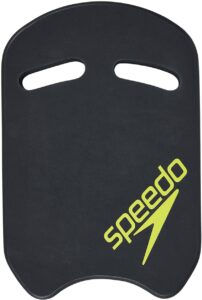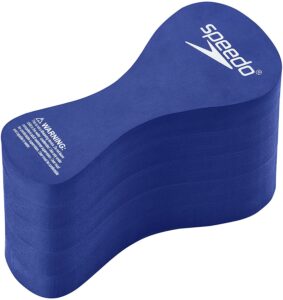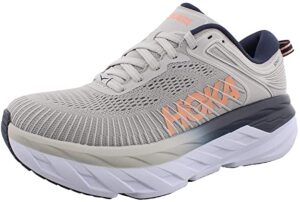Pudendal Neuralgia is inflammation (or damage) to the pudendal nerve. This nerve lies deep within the pelvis, passing through the pelvic floor muscles, giving sensation and movement signals to the muscles of the pelvis and external genitalia. Damage to this nerve can happen during birth due to it’s location. Symptoms will usually settle after a few months but can continue more long term depending on the damage that occurred.
Important note:
Any pins and needles, numbness or dysfunction in the genital area, including signs of incontinence, must be reported to your healthcare provider immediately and before trying any of the below treatments. Cauda equina syndrome is a medical emergency and can present in a similar way to pudendal neuralgia (see symptoms below).
Pudendal neuralgia can only be diagnosed by a healthcare professional and usually involves a physical examination, MRI scan and / or nerve tests.
Symptoms of pudendal neuralgia:
-
You might feel a burning, crushing, shooting or prickling sensation in the pelvis or genitals
-
Symptoms are likely to be worse when sitting and better once standing
-
Numbness / pins and needles in the pelvic or genital regions
-
increased sensitivity to pain, you may find just a light touch or wearing clothes uncomfortable
-
increased sensitivity to pain, you may find just a light touch or wearing clothes uncomfortable
-
Sudden urge to go to the toilet or going more frequently
-
Pain during sex
Causes of pudendal neuralgia:
-
Child birth
-
Previous history of trauma to the pelvis
-
Prolonged sitting, with or without trauma, i.e. cycling & horse riding can cause damage over many years and pregnancy / birth can exacerbate the symptoms / damage.
-
Prolonged constipation
-
A growth in the pelvic region that is pressing on the nerve
Here is what the evidence says about the treatment options for pudendal neuralgia:
Avoidance – avoiding things that make the pain worse, such as cycling, constipation or horse riding, can help reduce the symptoms. Prolonged sitting is often hard to avoid, try a stand-up desk if your job is desk-based or try a doughnut cushion to relieve the pressure on the nerve.
Doughnut cushions – a lot of studies have been carried out in order to check the effects of doughnut cushions on pressure relief. The studies are always in their favour, so if pain is your main issue then something like this might help to take some of the pressure off the affected area. Various types of cushions are on the market, have a look at our Top 5 pressure relief cushions HERE.

TENS – TENS or transcutaneous electrical nerve stimulation, uses mild electrical currents to help relieve pain. Evidence does suggest that adding TENS to a physical therapy exercise program is more effective than just the physical therapy program alone. Always speak to your midwife or GP before using a TENS machine to check it is the right course of action for you (and your baby).
There are many different TENS machines available to buy, so if you are thinking of TENS as a treatment option then have a look at our Top 5 picks to make things a little easier.
Exercise – Exercises are generally aimed at relaxing the pelvic floor muscles to take pressure off the pudendal nerve. Have a look at this video for some guidance on helpful exercises. Avoid cycling, horse riding, rowing and any repetitive straining (repeated squats / lunges / strenuous core work) and be sure to get in touch with your local Physiotherapy Clinic. Ask to see a Women’s Health Specialist who will help to create an exercise regimen tailored to your exact needs. They will also check for any other symptoms that might need further investigation or treatment.
Swimming – Swimming has been found to help with pelvic girdle pain, lower back pain and prevention of antenatal weight gain. Swimming is a great form of exercise when pregnant (and after). If you are not a competent swimmer, that’s ok. Grab a kickboard and do a legs only workout. You can do front-crawl leg kick or breaststroke and you can relax the abdominals as much as you feel you need to. This should be pain-free.
If you are a strong enough swimmer but you have pain in the pelvis / coccyx / lower back or hips when swimming, then ditch the leg kick and use a pullboy to keep your legs in a neutral position. You can still do your favourite stroke using this and it’s a great workout for the upper body and core!
Yoga – Yoga is a great exercise for teaching relaxation techniques. Relaxation is very important when it comes to Pudendal Neuralgia as it can often be tight muscles (or scar tissue) that is causing the irritation / compression on the nerves so learning how to relax these muscles can have a big impact on your symptoms.
There are lots of Online Yoga programmes available, have a look at our Top 5 here (and why we love them)! You can also read our blog on how yoga can help in other ways.

Walking / running – Being upright is generally ok when it comes to pudendal neuralgia. Jogging or running can sometimes cause some discomfort due to the impact associated with this type of exercise. Make sure you have some well cushioned running shoes to help reduce the impact as much as possible. These trainers by Hoka are really popular when it comes to support and cushioning.
Nordic Walking – Nordic Walking is effectively power walking using ski poles. It is low impact and has been compared to jogging for its effects on resting heart rate, blood pressure, exercise capacity, maximal oxygen consumption and quality of life. Studies have looked into the effects of Nordic walking on lower back pain and the results have been good. There are lots of videos online, like this one, that teach you the basic Nordic Walking techniques (or have a look for a local club). You can buy your poles online here also.
Important symptoms to watch out for regarding Cauda Equina syndrome:
If you have any of the following symptoms then go to your nearest accident and emergency department immediately:
- Severe low back pain.
- Pain, numbness, or weakness in one or both legs that causes you to stumble or have trouble getting up from a chair.
- Loss of or altered sensations in your legs, buttocks, inner thighs, feet or areas that you sit on when in a chair (including genitals / anus) that is severe or gets worse and worse.
- Recent problem with bladder or bowel function, such as trouble eliminating urine or waste (retention) or trouble holding it (incontinence).
- Sexual dysfunction that has come on suddenly.
Cauda Equina Syndrome is a very rare but very serious condition that must be addressed immediately to prevent any lasting damage to the nerves involved.




